NEWS
CNN-4A wants MELLPI functions as HIMSoG-8
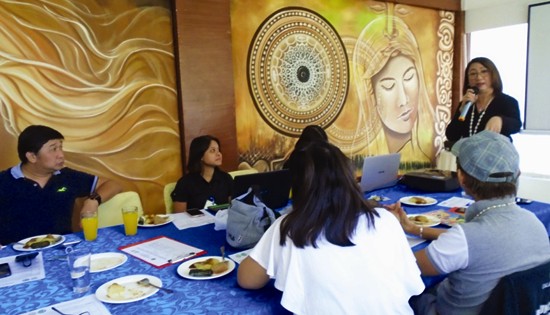
By JACK C. GADAINGAN
November 27, 2019
TACLOBAN CITY – To become members of their own Regional Nutrition Evaluation Team (RNET) doing Monitoring and Evaluation of Local Level Implementation Protocol (MELLPI Pro) was one of the Communicators Network for Nutrition of Region-4A members concerns to relate themselves as the members of the Harmonized Initiative for the Spread of Good Nutrition in Region 8 (HIMSoG-8), who are already active conducting MELLPI Pro region-wide as members of Region-8 RNET.
This developed during the Technical Exchange between the NNC-Calabarzon media-group partner CNN-4A and NNC-8 media-group partner HIMSoG-8 conducted on October 24, 2019 at the Leyte Park Hotel, here.
Ten CNN-4A members, guided by their Regional Nutrition Program Coordinator (RNPC) Carina Z. Santiago, visited Eastern Visayas Region, for an exchange of accomplishments and Sharing of Best Practices between the two nutrition advocate media-groups. Such technical rendezvous is second for HIMSoG-8 already, as on July 15-17 a contingent of 13 practitioners of quad-media from Region 1 who called themselves the Regional Organization of Nutrition Development Advocates of Region 1 (RONDA 1) of Ilocos Region also visited Region 8 for similar purpose, to widen the media-partner’s horizon of accomplishments through exchanges of notes with the other regions’ counterparts.
It was gathered that NNC-4A leadership and CNN-4A members were astounded to learn that all members of HIMSoG-8 are actually members of the Eastern Visayas RNET and/or members of nutrition evaluation teams in their respective localities. This is aside from the HIMSoG-8 leadership who is likewise sitting as member in Regional Technical Working Group (RTWG) and other nutrition bodies.
The only apprehension raised by the visiting group in regards the setup, was of “bias” coming into play should the media-group be doing evaluation of their own localities, which practically negated by the fact that MELLPI Pro is – a purely document-based evaluation, that leaves no chances for baseless-adjustments
It was learned, that Mach 6-7, 2019 36 Nutrition Stakeholders from Eastern Visayas including HIMSoG-8 members who were actively involved in the yearly conduct of Monitoring and Evaluation of Local Level Plan Implementation (MELLPI) on nutrition programs and services gathered for a two-day roll-out training on the updated monitoring and evaluation protocol on nutrition dubbed “MELLPI Pro” at the Commission on Audit (COA) Training Center, Palo, Leyte.
The MELLPI Pro replaces the traditional MELLPI, the nutrition programs implementation assessment tool for localities adopted in the 80s. The new upgraded system emphasis: a) assessment of LGUs’ progress toward compliance to quality standards, b) evidence-based validation, and c) mentoring through joint discussion for learning and action discussion with LGU or nutrition worker assessed. An added feature (of MELLPI Pro) is the Performance Assessment of Nutrition Workers namely: Nutrition Action Officers, District/City Nutrition Program Coordinators and Barangay Nutrition Scholars (BNSs).
Said new protocol connoting professional, progressive, promotional, process, and profitable is for full implementation by year 2020 – with this year (2019) as the transition period. By then under MELLPI Pro all local government units (LGUs) and their corresponding lead nutrition workers nationwide shall undergo assessment and evaluation:
At the regional level, the Regional Nutrition Evaluation Team (RNET) shall visit all provinces and highly-urbanized and independent cities; at the provincial level, the Provincial Evaluation Team (PET) shall visit all municipalities and component cities; at the city and municipal level, the City/Municipal Evaluation Teams (C/MET) shall visit all barangays. Meanwhile the National Nutrition Evaluation Team (NNET) shall evaluate the National Honor Award (NHA), and the 1st and 2nd Year CROWN Maintenance Contenders.
NNC-Calabarzon media-group partner CNN-4A visits Eastern Visayas for technical exchange with HIMSoG-8
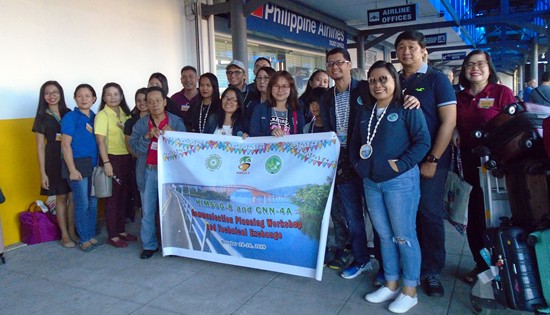
By JACK C. GADAINGAN
November 17, 2019
TACLOBAN CITY – Carina Z. Santiago, Regional Program Coordinator of National Nutrition Council (NNC) Region-4A (Calabarzon) together with Lourdes B. Orongon and Ezra Minette B. Lasin, Nutrition Officer III and Nutrition Officer II respectively from the same region, headed a contingent of 10 practicing media from Calabarzon calling their group as the “Communicators’ Network for Nutrition in Region 4-A” (CNN-4A) to a visit of Eastern Visayas Region for a Technical Exchange with NNC-8 media-group partner Harmonized Initiatives of Media for the Spread of Good Nutrition in Region 8 (HIMSoG-8) on October 24-26, 2019.
The CNN-4A was headed by its President Red C. Alano, Vice President (VP) for Print Antonio R. Antazo Jr., VP for Broadcast Emil Jun B. Delos Santos, VP for Social Media Kier Gideon Paolo Gapayao, Auditor Genielyn M. Tobias, Chairman of the Board of Directors Janet G. Buelo, and members Nanacy G. Quizon-Vidal, Maria Victoria A. Carino, Maricel Manza and Mayrenel C. Manalo.
A contingent from HIMSoG-8 likewise headed by its President Antonio C. Pueblos, VP Jacob C. Gadaingan, Broadcaster Cecelia P. Tibo, cable-TV broadcast providers Evelyn Bacol, Nelson Braga, and Mathew Manuel, and News Editor Albert Lesiguez, and two personnel from NNC-8 Novida B. Rico and Clytie Sta. Cruz welcomed the visiting party during their arrival 5AM at Tacloban City Airport.
Of common goal, as both media organizations are involved in the fight against hunger and malnutrition and in promotion of good nutrition – with CNN-4A the media-group partner of NNC-4A within its jurisdiction Calabarzon area. Meanwhile HIMSOG-8 in partner with NNC-8 for the Eastern Visayas Region. The two advocacy groups conducted their technical rendezvous after a brief breakfast at the Leyte Park Hotel, here.
The Technical Exchange consisted with presentations of each media-group’s accomplishments and Sharing of Best Practices with both presidents doing the power-point presentation reporting, Pueblos for HIMSoG-8 and Alano for CNN-4A.
HIMSoG-8 Treasurer Ray Gaspay, publisher of Samar News.com and HIMSoG-8 member Sarwel M. Meniano, chief of Philippine News Agency (PNA) Region 8 joined the group for the technical exchange, and other activities.
In the afternoon, the Calabarzon group was escorted by the Eastern Visayas group to an Environmental Scanning to the Super Typhoon Yolanda Marker (Anibong Shipwreck), the Mat Weavers and Products in Basey town, the newly constructed Town Hall of Basey and Basey’s Oldest Church, the 2.16 kilometers long “San Juanico Bridge” connecting Samar and Leyte Islands, and the newly upgraded MacArthur Park. The evening of the first day (Oct. 24, 2019) featured a fellowship, loaded with more bonding initiatives, exchanges of tokens, with good food and live music.
The following day NNC-4A and CNN-4A continued with their more serious tasks like “Communication Planning for CY 2020”: consisting of Workshop Overview, Review of Print and Radio Placements and various IEC Material, the Philippine Plan of Action 2017-2022, Review of Calabarzon Communication Plan 2013-2015, and Actual Communication Planning Workshop.
For its last salvo, the CNN-4A gave way to its 3rd Quarter Meeting, consisting of review/approval of the highlight of the Previous Meeting, and other organizational concerns.
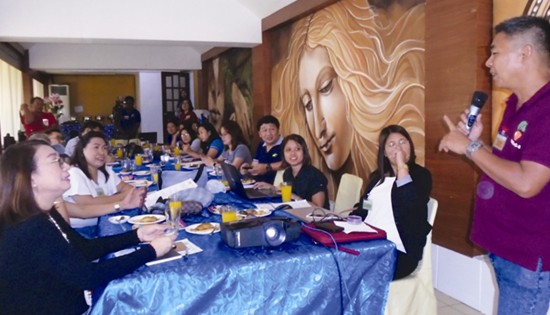
Need for WYD Iodine Checker highlighted in Asin Summit
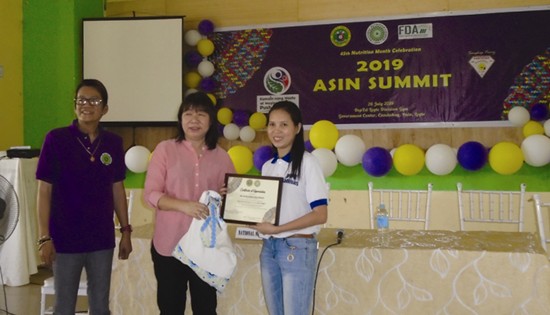
By JACK C. GADAINGAN
September 21, 2019
PALO, Leyte – The one-day “Asin Summit” on July 26, 2019 attended by primary health /nutrition players in the region among them: municipal health officers (MHOs), provincial, city and municipal nutrition action officers (P/C/MNAOs), nutritionists/dieticians and rural sanitary inspectors (RSI), and salt-traders and representatives from government nutrition-partner agencies – particularly those representing the Regional Bantay Asin Task Force (RBATF), highlighted the lack of a most important and needed apparatus in successfully implementing the Asin Law – the WYD Iodine Checker!
Republic Act No. 8172 or ASIN Law among others mandates: to the elimination of micronutrient malnutrition, particularly iodine deficiency disorders; to ensure that only iodized salt is available in the market for human and animal consumption; to require salt producers/manufacturers, importers, to iodize the salt they manufacture, produce, distribute, trade and/or import; and require salt re-packers to repack and sell only iodized salt.
It was gathered in the region, that samples of Table Salt shipments gathered from the ports of entry around Eastern Visayas – and those from the salt traders are transported for checking of iodine content at the Department of Science and Technology (DOST) Region 8, here and at the Food and Drugs Administration (FDA) in Cebu City.
It was learned that prior to Super Typhoon Yolanda on November 8, 2013, a WYD Iodine Checker was provided to the Philippine Ports Authority (PPA) Port of Tacloban, an RBATF member, for the instant checking of iodine content of Table Salt shipments arriving on-the-spot.
Further that despite the consistent discrepancy of 8-point on the analysis between the two government laboratories on tests of samples from Tacloban Port with the FDA Cebu results higher, still both results show that Table Salt arriving in Eastern Visayas, is still very far shy of iodine content, as required by law that is 30-70 ppm (parts per million).
A participant salt-trader to the summit named Felma Omalay representing the Salinas Foods Inc., made a power-point presentation on the “Importance of Iodized Salt.” She claimed that Salinas launched the FIDEL program as a corporate social responsibility with the Department of Health (DOH) in 1993 that calls for iodization of all salt in the market. Likewise, she claims that their company is the sole distributor in the Philippines of WYD Iodine Checker and its reagents, available at P50,000 only.
As it became apparent there is need to organize or to reactivate the Provincial/City and Municipality Bantay Asin Task Forces (P/C/MBATFs) as well, in order that all points of importation or shipment-entry shall be effectively and routinely monitored for the quality of salt iodization – and to immediately take the suitable corrective action when necessary, health and nutrition managers and local government units (LGUs) in the region have to invest on a WYD Checker, for the successful implementation of RA 8172 or Asin Law.
Eastern Visayas nutrition situation reported
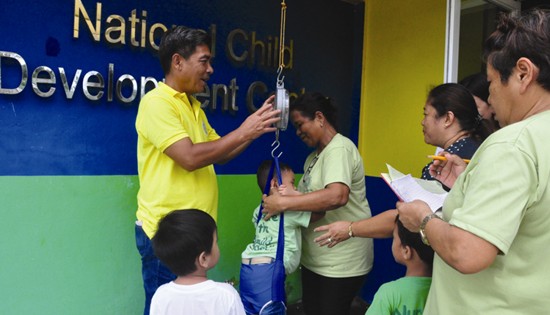
By JACK C. GADAINGAN
September 18, 2019
TACLOBAN CITY – Based on 2018 Operation Timbang Plus of pre-school children aged 0-59 months Samar province ranks first in the provincial ranking on underweight and severely underweight with a prevalence of 13.7%, followed by Northern Samar province in second with a prevalence of 9.5%, and by Eastern Samar province in third with a prevalence of 8.4%. In fourth is Leyte province with 8.3%, fifth Biliran province with 7.5%, and Southern Leyte province in sixth with 5.9%.
Among the cities in Region 8, Baybay City ranks first with a prevalence of 11.9%, Calbayog City in second with a prevalence of 10.3%, and Borongan City in third with a prevalence of 9.3%. This is followed by Ormoc City in fourth with 7.3%, Catbalogan City in fifth with 6.9%, Maasin City in sixth with 3.5%, and Tacloban City in seventh with 3.4%. A child is underweight when his/her weight is lower or below the normal weight for his/her age.
Dr. Catalino P. Dotollo Jr., National Nutrition Council Region VIII (NNC-8) Regional Nutrition Program coordinator, detailed this in a presentation of Local Nutrition Situation during the conduct of “Asin Summit” at the Department of Education (DepEd) Leyte Division Gymnasium in Palo, Leyte on July 26, 2019.
In terms of stunting Samar again ranks first in provincial ranking with a prevalence of 29.1%, followed by Leyte in second with a prevalence of 18.7%, and Northern Samar in third with a prevalence of 18.5%. Biliran province follows in fourth with 18.5%, Eastern Samar in fifth with 17.1%, and Southern Leyte in sixth with 14.1%.
Among the cities Baybay City again ranks first in stunting with a prevalence of 24.5%, likewise followed by Calbayog City in second with a prevalence of 21.4%, and Ormoc City in third with a prevalence of 19.2%. Borongan City comes in fourth with 18.7%, Tacloban City in fifth with 17.7%, Catbalogan City in sixth with 16.7%, and Maasin City in seventh with 7.4%. Stunting is a condition when a child’s height is lower or below the normal height for his/her age.
On wasting or Weight for Length/Height, Biliran province topped in first with a prevalence of 5.4% (1,122 magnitude), Northern Samar follows in second with a prevalence of 5.4%, Leyte in third with prevalence of 5.1%. Samar province in fourth with 4.9%, Eastern Samar in fifth with 4.2%, and Southern Leyte in sixth with 4.0%.
Among the cities Baybay City ranks first with a prevalence of 7.1%, Calbayog City second with a prevalence of 6.4%, Ormoc City third with a prevalence of 5.3%. Borongan City fourth with 5.3%, Catbalongan City fifth with 5.2%, Tacloban City sixth with 4.9%, and Maasin City in seventh with 1.4%. Wasting is when a child’s body weight in proportion to his/her length, height or thinness is low relative to the standard weight-for-length/height.
In terms of overweight and obesity, Northern Samar ranks first in provincial ranking with a prevalence of 4.3%, Samar ranks second with a prevalence of 4.2%, Eastern Samar in third with a prevalence of 4.1%. Leyte in fourth with 3.9%, Southern Leyte in fifth with 3.9%, and Biliran in sixth with 3.5%.
Among the cities, Baybay City again ranks first with a prevalence of 6.3%, Catbalogan City in second with a prevalence of 5.3%, Ormoc City in third with a prevalence of 5.0%. Borongan City in fourth with 4.6%, Tacloban City in fifth with 3.7%, Calbayog City in sixth with 3.1%, and Maasin City in seventh with 1.8%. Overweight and obesity is when a child’s body weight in proportion to length/height or fatness is high relative to the standard weight for his/her weight-for-length/height.
The OPT+ was conducted in six provinces, seven cities and 134 of 136 municipalities of Eastern Visayas region covering 61.3% of 0-59 months Preschool Children.
Schools Division chief bares ‘Oplan Kalusugan’
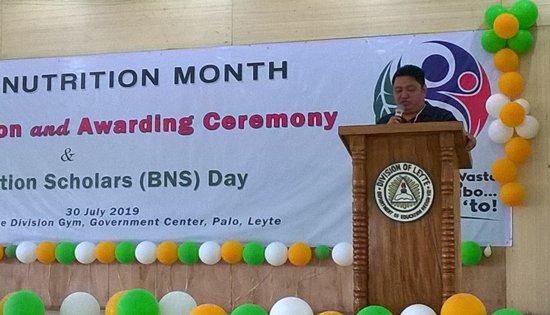
By JACK C. GADAINGAN
September 4, 2019
GOVERNMENT CONTER, Palo, Leyte – The Department of Education (DepEd) has consolidated all its health programs, plans, policies, and activities for their effective and efficient implementation at the school level into “Oplan Kalusugan.”
Included in this convergence of interventions are five flagship programs namely: 1. The major school health and nutrition program specifically the School-Based Feeding Program (SBFP); 2. National Drug Education Program (NDEP); 3. Adolescent Reproductive Health Education (ARH); 4. Water, Sanitation, and Hygiene (WASH) in Schools (WinS); and 4. Medical, Dental, and Nursing Services; and 5. Mental Health Program.
Dr. Ronelo Al K. Firmo, Leyte Schools Division superintendent, revealed this in his welcome address during the 45th Nutrition Month Celebration Culmination and Awarding Ceremonies held at the DepEd Leyte Division Gymnasium, here on July 30, 2019.
According to Firmo, in regards to school-based feeding program the agency funds public schools for a 120 feeding-day period, and the Leyte Division has already released funds for the first 120 days feeding program of schools under its jurisdiction, further asking the BNSs present to provide guidance to school principals on what healthy foods to cook, when they can.
He said that part of the school-based feeding program is the Gulayan sa Paaralan, where pupils are introduced early to learn on vegetable and food production; as well as ensuring that only healthy foods are made available in school canteens through DepED Order No. 13, s. 2017 or “Policy and Guidelines on Healthy Food and Beverage Choices in Schools and in DepEd Offices,” Firmo added.
It was further gathered that the National Drug Education Program (NDEP), is included as among the health interventions as problems on illegal drugs pose as a bigger threat to the security and welfare of the youth and students; the Adolescent Reproductive Health Education (ARH), to address the burgeoning problem of teenage pregnancies, where many misguided youths are enticed into risky sex behavior – resulting on unwanted pregnancies causing the girls to drop-out of school, lessening their chances of a better future;
Water, Sanitation, and Hygiene (WASH) in Schools, aims to provide children with clean water to use, as well as to teach them the importance of being clean and on cleaning by themselves; Medical, Dental, and Nursing Services is to maintain and improve the health of schoolchildren and school personnel through the prevention and control of diseases; and Mental Health Program, due that it was observed a number of children are actually suffering from mental problems.
